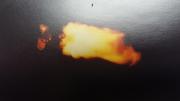This is a respectful and excellent discussion of the kind I really appreciate, and have come to expect, here at P-F.
@Surf, good post.
What you describe in paragraph 2 is what Paul Gomez taught to us, as members of his Baton Rouge Training Group, back from 2002-2005 while I was still in the area. Paul taught us contextual positions as they related to situations and distance (I take it as #3 position from your description). Of course Craig coming over to Paul's "Boat Port" and working with us really opened the door.
I was exposed to similar techniques as Mr. Hackathorn demonstrates while at Gunsite in the early 90's... not taught in class, but hanging out at Hershel's in the evenings with a few other guys. While we as a shooting/training community have grown an incredible amount since, thanks to luminaries (like Craig and the Shivworks collective), it's also good to understand the contextual lineage imho.
While I'm old and wearing down and my training is not as "Recent, Relevant, and Realistic" (I can hear Craig saying that LOL) as it once was, I continue to learn thanks to excellent discussions here.




 Reply With Quote
Reply With Quote

